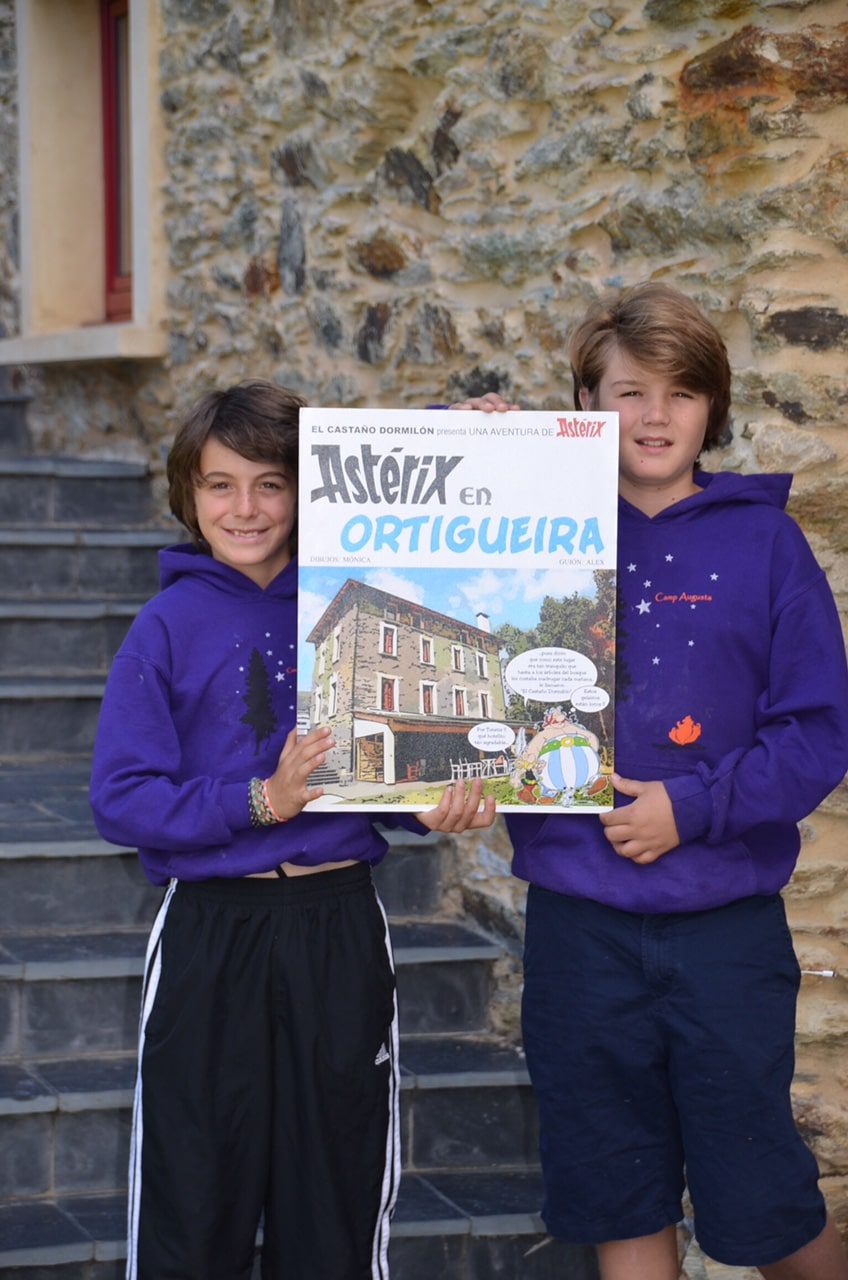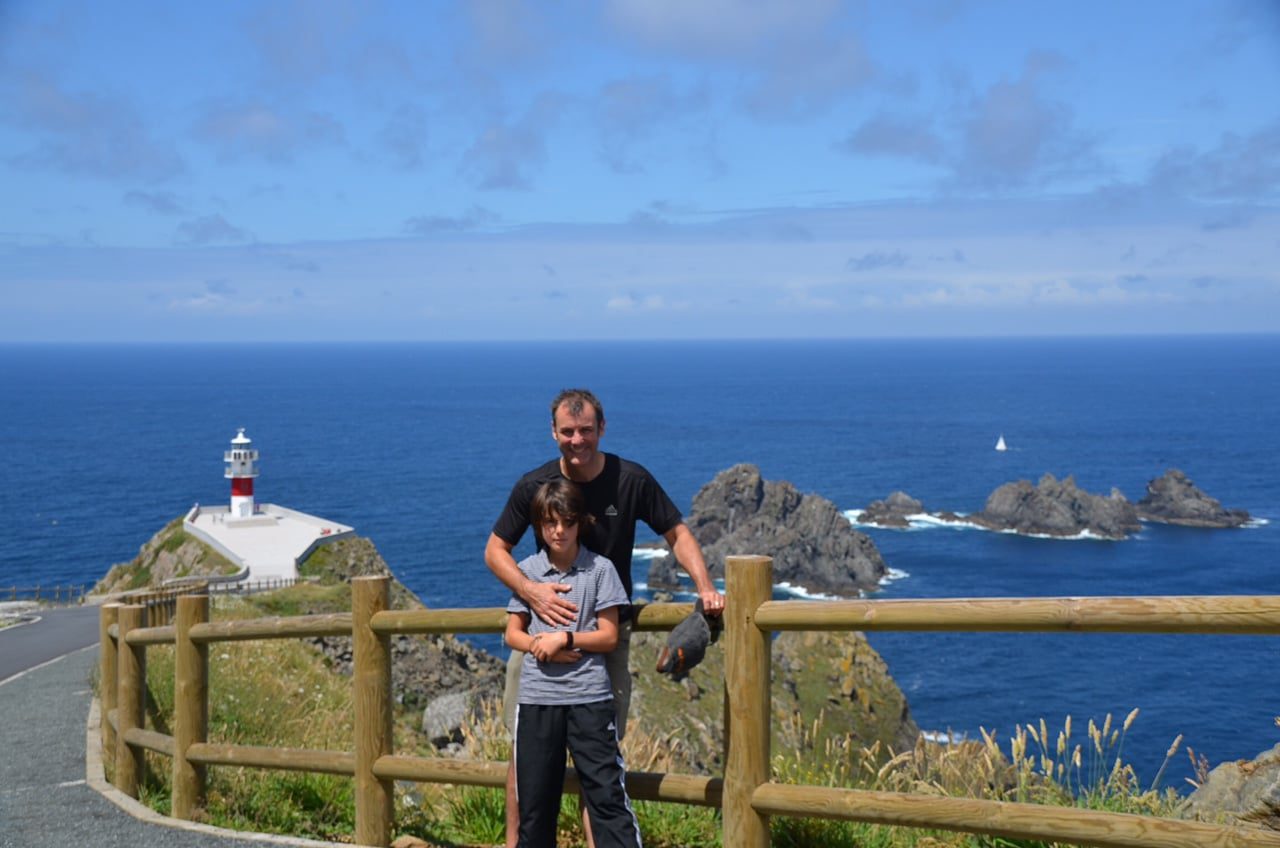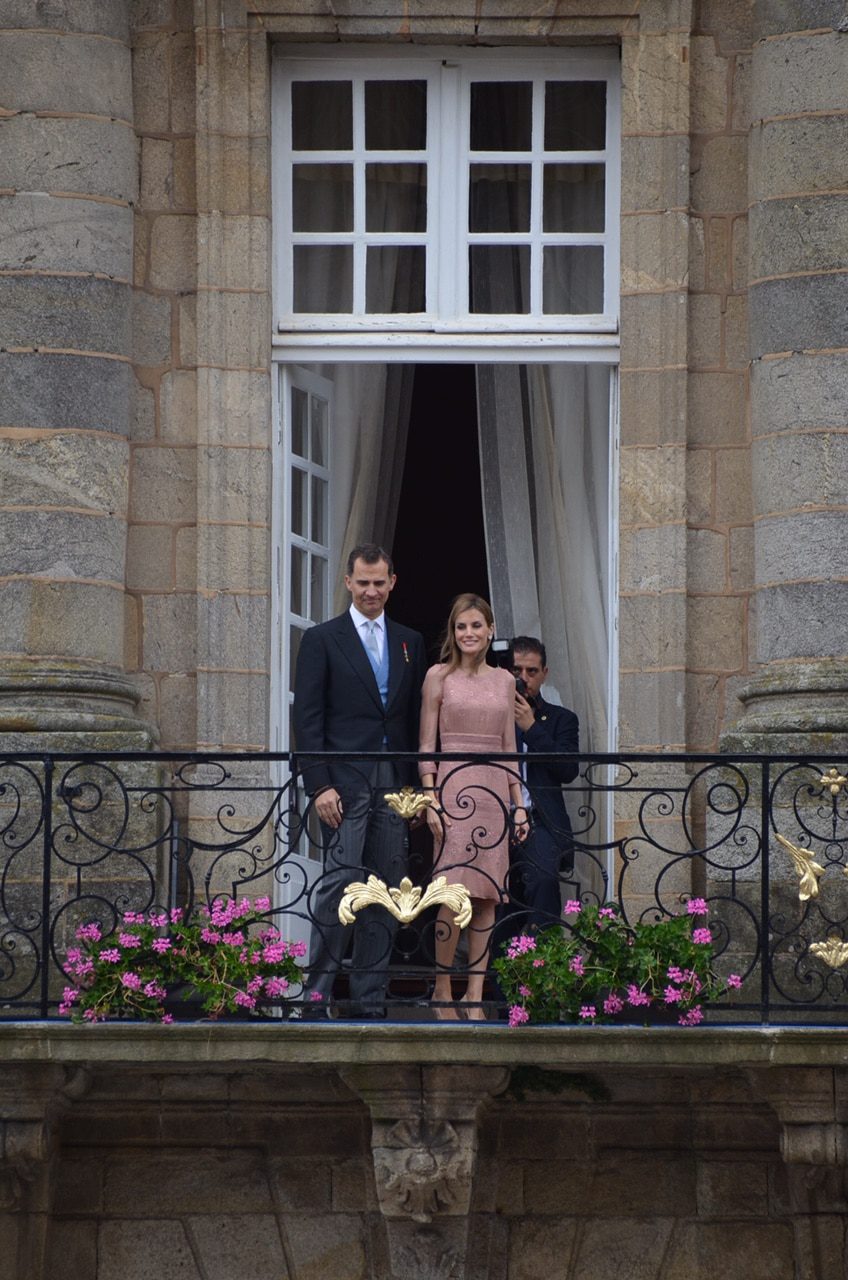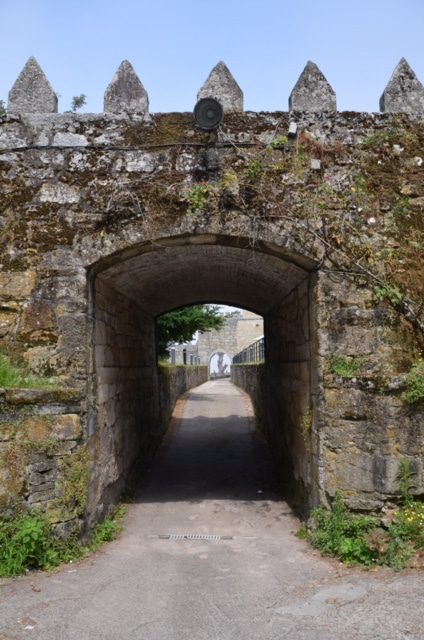Tucked away in the far west corner of Europe, the Atlantic provinces of Spain – Basque Country, Cantabria, Asturias and Galicia – boast unique cultures and languages, exceptional regional food, breathtaking natural beauty and blessedly mild summer temperatures.
Collectively, these Northern provinces feel a world apart from the rest of Spain. The same steep coastal range and few degrees of latitude that isolated the region from Moorish influence in the past, today create a temperate, verdant, and less touristy summer micro-climate that contrasts sharply with the south.
At the same time the region offers the same beloved evening paseo culture as the rest of Spain. Expect your kids to be in good company snacking on helado at midnight in northern cities like San Sebastian and Santiago de Compostela, while you enjoy your gin and tonic like a Spaniard (that is, after dinner rather than before).

Exploring Northern Spain with Kids
Pintxos with Half-Pints in San Sebastian
Pintxos are the Basque equivalent of tapas, small bites grazed on while socializing. At the top of our list of things to do in San Sebastian, Spain with kids is sampling the renowned pintxos, often served on the eponymous skewers and featuring a dizzying array of ingredients like peppers, anchovies, olives, salt cod, octopus, Spanish tortilla, chorizo, and morcilla (blood sausage). Families appreciate that the small portions mean you’re not on the hook if it doesn’t please young palettes.
It is best to hit the bars on the early side, before 9 pm when the crowds start growing. Another strategy is to head past the charming but packed Parte Vieja in favor of the more laid-back Gros neighborhood, to larger bars that offer table seating and menus featuring rationes (larger plates), giving kids space and selection while the adults enjoy the chaos.
Recommended family pintxos spots:
- Bodega Donostiarra. Large outdoor and indoor tables, and the kids loved the brochetas, meat kebabs served on a fun hanging rack at the table.
- Bergara. Big tables and copious attractive pintxos on display on the high counter make ordering by pointing easy.
Recommended family-friendly hotel in San Sebastian:
Tryp Orly is very family-friendly, with bunk beds built into the wall of the family suite. It’s walking distance to the city beaches and the Parte Vieja, and offers a kids’ activity and toiletry set.
Scaling Peaks in the Picos
For rigorous hiking in the far reaches of Cantabria, the Picos de Europa is a vast national park full of dramatic peaks and bucolic valleys. The Picos, located close to the coast, were the beacon for Columbus and other New World explorers on their return journeys.
Our favorite hike was the strenuous 5.8k exposed trail from Potes, along a narrow river gorge, up to the impossibly quaint, tiny town of Tresviso. After miles of breathtaking views, the entrance to Tresviso is marked by a gushing spring (a nice place to wet your bandana if the day is hot) and a serenade of cowbells.
Once in this town of 65 residents, with its tidy stone houses and flowering window boxes, you can’t miss the only restaurant and pension, La Taberna. La Taberna serves up views of the valley, along with much-needed cold Mahou beer, hearty food and, for the brave of heart, a bracing chase of orujo (the local aquavit) to provide sustenance for the hike back down.
Recommended family-friendly hotel in the Picos:
Las Espedillas is a tiny, charming and very reasonable family-run B&B beloved by our Spanish friends who have been visiting for 20+ years. A truly wonderful find among family hotels in northern Spain. The town of Lon is so small that local kids followed our car as we drove in, and the owner, Angela, will make you feel like part of the family.
Sit back, relax and leave the planning details to us.
Just send a quick request, and we’ll pair you with an expert Travel Advisor who can design and book your dream trip: a custom itinerary, private guides, immersive local experiences and handpicked hotels. Click to get started!
Waves and Caves in Asturias
For our Northern California family with roots in New York, Asturian beaches are ideal. They have the dramatic, uncrowded beauty of a Pacific beach without the fog, icy water, or deadly currents. And they have warm, gentle air without the cloying humidity of the East Coast. Of course, it’s all relative; our Spanish friends vastly prefer the warmer Mediterranean waters.
There are many beautiful beaches along the A-8 coastal highway, but our favorite was Playa de Espasa, a wide, beautiful beach with ample amenities, parking, the ubiquitous beach bar/restaurant, a friendly surf school and souvenir vendors. Despite all this, it still has a laid-back feel.
While the kids surf, the adults can hike through hay fields with ocean vistas along a picturesque stretch of the Coastal Route of the Camino de Santiago, one of many sections of the famed centuries-old pilgrim footpath recognized as a UNESCO World Heritage Site. The path is lined with small beaches within a 30- to 40-minute walk, each with small bars, the perfect pit stops for a refreshing Spanish clara (lemonade mixed with beer).
For more hearty fare, rustic sidrerias (cider houses) dot the countryside, serving regional specialties like fabada (fava bean stew), Cabrales blue cheese (all the better eaten in earshot of the ubiquitous cowbells in the area), costillas (ribs) and local seafood cooked on oak fires. The regional ciders are served with a special aerating apparatus, sure to be popular with the kids even if they can’t sample the hard cider.
This area is also dotted with Paleolithic caves; the Tito Bustillo cave can be visited and has a fascinating museum. Older kids may find the graphically named Chamber of the Vulvas especially intriguing!
Recommended family-friendly hotel in Asturias:
Palacio de Llibardon is a charming rural property 20 minutes inland, with spacious, rustic-chic rooms and a delicious breakfast.

Bagpipes, Brujas and Barnacles in Rias Altas
The wild horses and trademark rounded slate roof tiles overlapping like fish scales signal that you’ve entered northern Galicia. This Rias Altas region is also known for its eucalyptus forests, fabled brujas (witches) in the mist, and vast, glorious rias (fjords in Gallego), with turquoise waters that look Caribbean but feel glacial.
Each summer, the northern Galician town of Ortigueira hosts a lively Celtic music festival, with parades and performances with bands from as far as Scotland and Ireland. Nearby, two lighthouses are worth visits: Bares is the northernmost point of the Iberian peninsula and the site of ancient Phoenician port, while Cabo Ortegal marks the westernmost point of Spain and highlights some ancient geology.
Galicia is renowned for its seafood. Typical dishes include navajas (razor clams), langoustine a la plancha (grilled langoustine) and pulpo al feira (octopus with paprika). But perhaps the most intriguing delicacy in Galicia is percebes, or goose barnacles, which look like the talon of a long-lost dinosaur and will definitely stretch boundaries for even the most adventurous eaters – kids or adults!
Recommended family-friendly hotel in Rias Altas:
El Castano Dormilon (The Sleeping Chestnut) is a stylish boutique hotel housed in a former school and smartly renovated by design professionals who returned from city life in Barcelona. Kids will love the Asterix + Obelisk themed posters.

Saints and Royalty in Santiago de Compostela
Santiago de Compostela is a bustling university town of 100,000, which grows exponentially during the feast day of St. James near the end of July. St. James is credited with bringing Christianity to the Iberian peninsula, and legend has it that his body washed ashore covered with scallop shells, the symbol used to mark the Camino route. His relics remain in the cathedral.
Pilgrims and, surprisingly for us, the young and photogenic king and queen of Spain descend on the town as they have done for centuries, many after days or weeks on the Camino path, to celebrate with food, drink, a ceremony and fireworks displays.
Santiago is a lively, walkable city with history, restaurants, and hipster craft beer stores. Visitors there for St. James Day are rewarded with a fascinating ceremony in the cathedral featuring the botafumeiro, the largest censer in the world, which dispenses thick clouds of smoke and incense as eight red-robed tiraboleiros pull the ropes.
Recommended family-friendly hotel in Santiago de Compostela:
Altair Hotel is a chic, well-located boutique property.

Patrolling the Ramparts and Exploring the Seas in Rias Baixas
Compared with the Rias Alta, the Rias Baixas (lower fjords) region of Galicia is gentler but also more developed, with some pretty unappealing architecture and crowded seaside towns. For adults, this is albarino territory, and winery cooperative Martin Codax is worth a visit as is the wine shipping hub of Cambados.
For kids, visiting some of the many offshore islands offers more chance to explore. The Ria Arousa area offers great hiking and camping on close-in islands that can be reached by bridge. The tiny Isla de la Toja (or A Toxa in Gallego) can be visited on foot, by bike or, as we did, by renting a surrey bike. A key attraction here is the Iglesia de las Conchas – a small church covered entirely with scallop shells, connected with the legend of St. James (Santiago).
The Islas Cies is an archipelago farther offshore, a glorious natural preserve with pristine beaches reached only by ferry or private boat. We were lucky enough to explore these islands with friends on their sailboat, anchoring offshore to enjoy GoPro-chronicled dives off the prow.
Baiona is in the southernmost part of Galicia, just miles from Portugal, and was the first town to learn of Columbus’ discovery of the new world when the Pinta returned in 1493. A replica of the ship is anchored in the harbor and open to visitors. The Parador de Baiona is built amid the ruins of an old fortification – one of the most kid-friendly settings in this chain of state-run hotels in historic locales. It’s great fun for the kids to clamber over the ramparts, whether or not you stay in the Parador.
Recommended family-friendly hotel in Rias Biaxas:
Parador of Baiona is a sprawling, comfortable, if somewhat generic hotel in an exceptional setting.
Relevant Links:
Best family hotels and things to do in Spain with kids
52 essential tips for a family vacation in Spain
10 amazing things to do in Spain with kids
Best things to do in Madrid with kids
What to do in Barcelona with kids
Editor’s Note: Photos by Susan Miller Davis.


 travel recommendations, inspiring adventures, and exclusive travel offers
travel recommendations, inspiring adventures, and exclusive travel offers